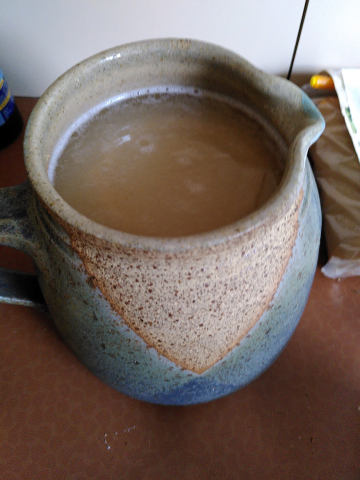Search the Blog
Latest Comments
Dyer's Strong Water!
Dyeing recipes are, well, let's say they often are interesting. And usually they will raise a lot of questions. And then some more.
First of all, just like old recipes for cooking, medieval and early modern dyeing recipes go easy on the measurements. Which makes a lot of sense because measuring stuff easily and precisely, like it's possible with modern scales, was not a thing back then. Also, just like with cooking food, variabilities can be quite large, which means that you'd have to gauge by experience if this is too much, too little, or just right.
And then there's the question of what is meant by a specific term. Such as... bran. That, it seems, can either be bran (as in wheat bran) just added to the dyebath, or it's fermented bran - if you let the stuff sit in a bit of water, it starts to ferment, turning slightly acidic.
Some of the recipes that we plan to look at during the Textile Forum also mention that as an ingredient - it also goes by the moniker "dyer's strong water" in some cases.
So guess what happened here in the kitchen?
It's fermented bran - I got a taste of it when I was in Romania, where it's called "borș", and it does have a quite pleasant taste. If you're curious now, you can read more about it in Wikipedia, and if you google for recipes, you will get some instructions about it. I tried with added (dry, actual Romanian) bread in the mix first, as many of the instructions tell you to, but I left it for a bit too long and the bread went mouldy. So in the second attempt, I used only bran and water - it took a bit longer for it to turn sour, but it was a success that time.
So now I'm looking forward to trying this in the dyeing!




